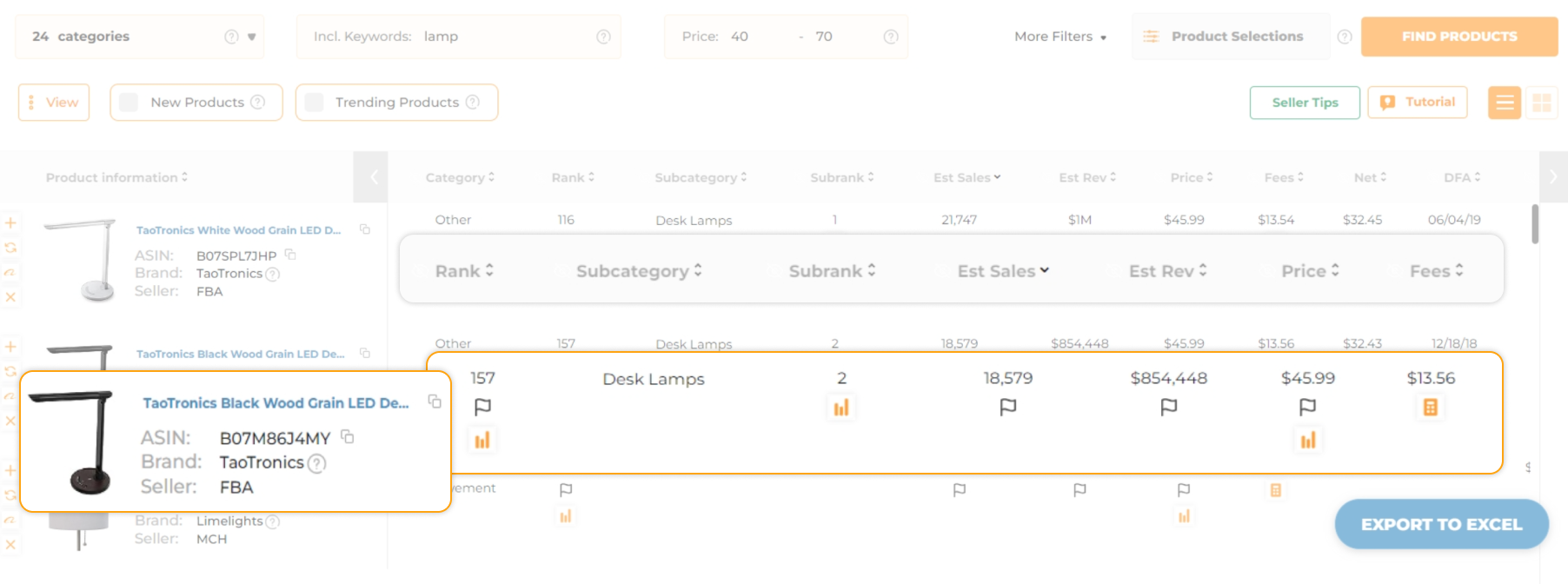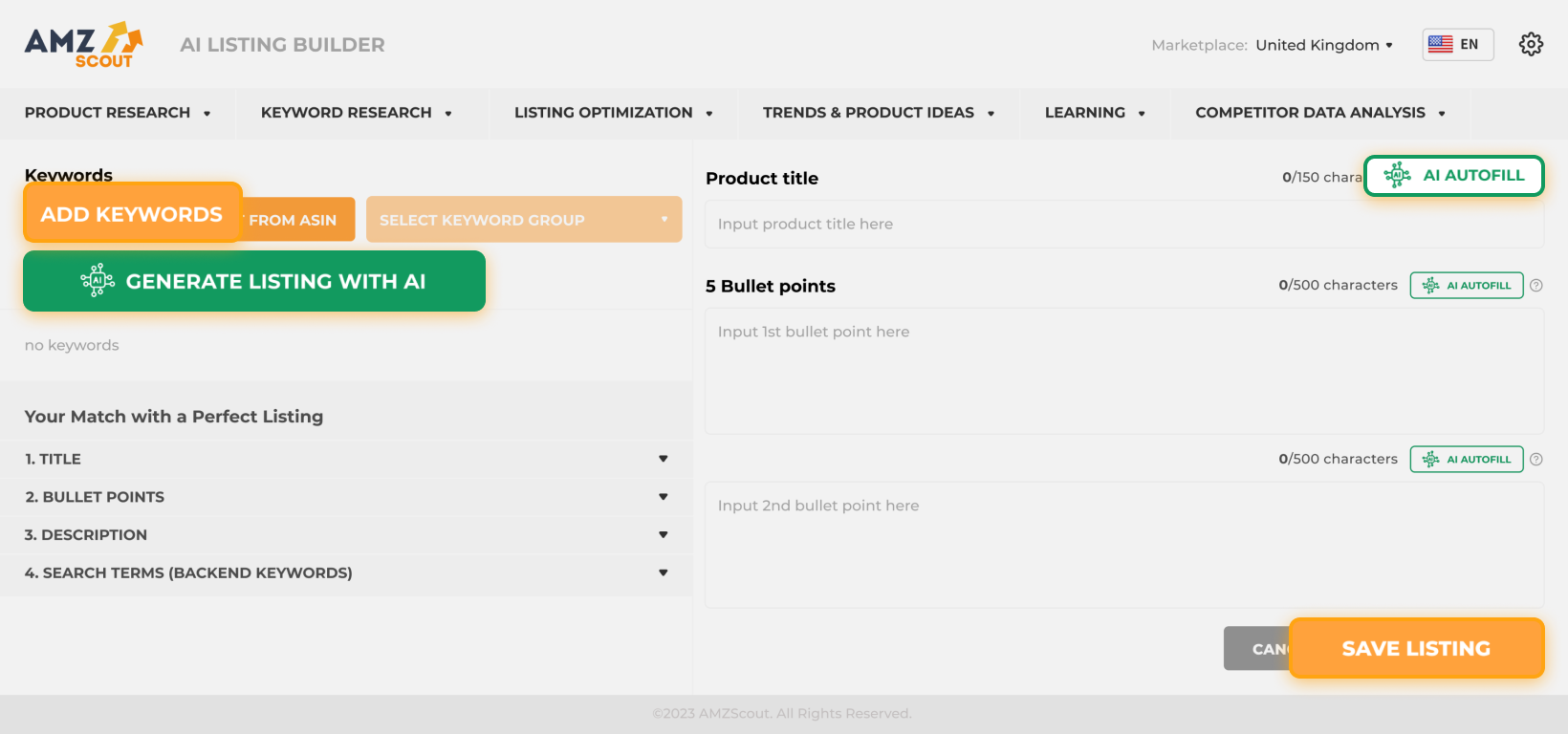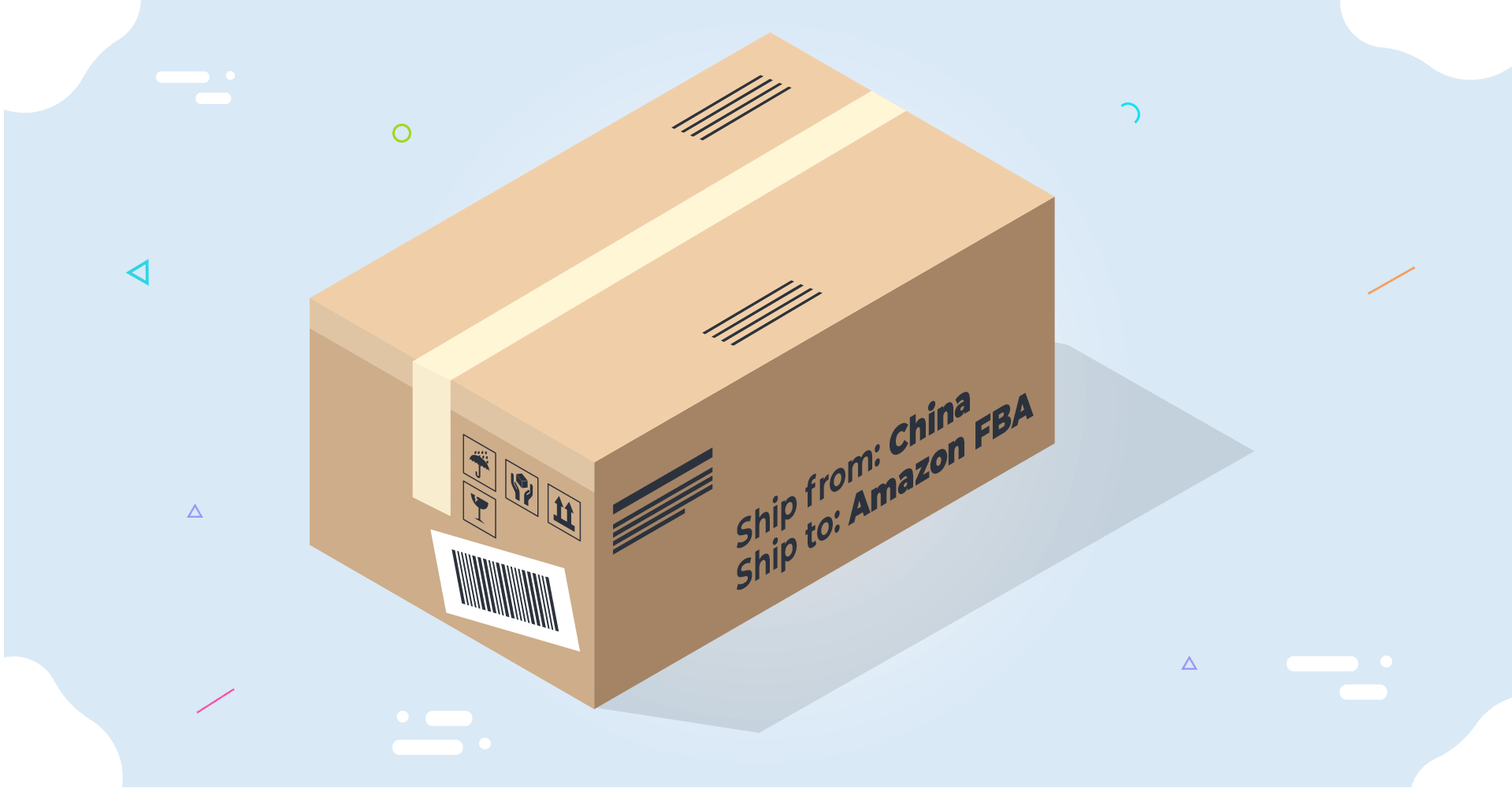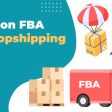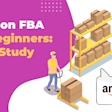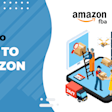
Starting on Amazon FBA With a Little Money: A Step-by-Step Guide
When starting an e-commerce business, many entrepreneurs turn to Amazon FBA. Its streamlined logistics service and high return potential make it an attractive option for both beginners and seasoned sellers. However, not everyone has the resources or willingness to make a significant upfront investment.
In this article, we’ll provide a step-by-step guide on how to start an Amazon FBA business with just a little money, making it accessible to anyone who’s ready to put in the effort.
Table of contents
- Step 1: Choosing a Selling Method
- Step 2: Finding Products with a Minimal Investment
- Step 3: Affordable Product Sourcing
- Step 4: Creating Your Amazon Seller Account
- Step 5: Creating a Low-Cost Listing
- Step 6: Send Products to Amazon FBA Centers
- How Much Does it Really Cost to Start an Amazon FBA Business?
- FAQs
Step 1: Choosing a Selling Method
Your approach you select for selling on Amazon plays a major role in determining your budget and expenses. While private labeling requires a significant upfront investment in order to create and market your own brand, there are also other, more economical options. Here’s an overview:
Note: It’s worth noting that the definition of "substantial" varies—what may seem like a large investment to one seller might be manageable for another. In this article, we focus on methods designed to help you start an Amazon business with an investment under $500.
Dropshipping
Note: While dropshipping is not required to use the FBA fulfillment method, some sellers may opt to combine the two in order to adhere to Amazon's dropshipping policy.
Pros: Minimal upfront investment—you only pay after making a sale.
Cons: Delivery times can be longer, as products are shipped first to an FBA center, then to the customer. But if you ship directly to the customer, you lose the FBA status, which affects your product’s visibility and priority on Amazon.
Wholesale
Pros: Access to bulk discounts and established products. Some suppliers may offer consignment deals, where you only pay after making a sale.
Cons: Bulk orders require significant upfront costs for products, storage, and shipping, and you run the risk of unsold inventory. Consignment deals may also need a strong reputation or reliable network of connections.
Selling Handmade Products
Pros: If you make your own products, your main costs are for raw materials and your time.
Cons: Production can be time-consuming, and scaling may be difficult if demand increases.
Selling Used Goods
Pros: You can sell your own pre-owned items at no cost or find bargains at used goods sales to resell.
Cons: Items must be carefully inspected for quality, and sourcing can be inconsistent.
Retail Arbitrage
Pros: Allows you to purchase discounted products individually and resell them.
Cons: FBA fees can eat into profits, so sending products in larger quantities is usually more economical.
It’s important to choose an Amazon selling method that aligns with your personal preferences and resources. You need to analyze your capabilities and constraints (including your budget, time, or skill set) to help you opt for an approach that fits your needs. You can also always start with one method and expand as you gain experience and resources.
Keep in mind that your initial investments will depend heavily on the type of product you choose to sell. Selecting the right product is crucial to your success. Let’s explore how to identify profitable options.
Step 2: Finding Products with a Minimal Investment
It’s important to find a product with healthy margins, high demand, and a minimal upfront investment to maximize your profitability while keeping costs low. This requires performing a thorough analysis of products and market trends to help you identify opportunities that align with your budget and goals, ensuring a balance between affordability and profitability.
Conducting this type of research manually can be time-consuming and may require experience. A better solution is using analytical tools that provide detailed statistics, so you don't have to sift through Amazon listings or social media trends. One such tool is the Product Database by AMZScout, which is user-friendly and efficient.
Let’s take a closer look at how to use this tool to help you find a winning product.
Getting Booming Product Ideas with the Product Database
The Product Database includes sales data on over 600 million products, and allows you to filter results based on your criteria in just three easy steps. Here's how to get started:
1. Open the AMZScout Product Database. Enter your email address to start a free trial (no credit card information is needed). The trial is accessible for an unlimited time, but there is a fixed number of searches allowed. The Product Database makes it easy to identify products worth investing in.
2. Enter your product criteria. You can search for specific terms and use various filters to refine your results. Consider applying the following filters, which are suitable for both the private label and reselling business models:
Category: Specify your preferred category - there are 24 options.
Estimated Sales: Aim for products with at least 200 sales/month for steady demand.
Weight: Opt for non-fragile and lightweight items under 5 lbs to save on shipping costs and FBA fees.
Product price: Target products priced between $30-70 to balance affordability for buyers with profitability for your business.
3. Get your list of product ideas. Click ‘Find Products’ to generate a list of matching products. Review the results to find interesting items, focusing on products with high revenue and low FBA fees to maximize profitability. Additionally, consider the demand and competition metrics to ensure that you're selecting items with strong sales potential and manageable market competition.
By selecting the right product, you boost your chances of success significantly. This also helps you avoid wasting money on items with low demand or poor profitability.
Step 3: Affordable Product Sourcing
If you don’t produce your own products, you’ll need to find economical ways to source them. Here are some budget-friendly options:
Amazon return pallets: These contain returned products from Amazon customers, many of which are in good or like-new condition. Around 70% of these items are typically usable and can be resold.
Online and offline auctions: Auctions can be a great way to find low-cost items. Websites and local auction events often have deals, but you also need to be sure to inspect the condition of the items before committing to any.
Online marketplaces: Platforms like Alibaba and AliExpress offer single items at wholesale prices. This can be a cost-effective option, but be sure to consider potential customs fees.
Local stores and sales: Check clearance sales at local stores or subscribe to their newsletters to stay updated on discounts. This option allows you to check the items in person and save on shipping costs.
No matter where you source your products from, always verify their condition and remember to account for any additional shipping expenses. Once you secure your inventory, you’re ready to start selling on Amazon.
Step 4: Creating Your Amazon Seller Account
In order to start selling on Amazon, you need to register a seller account. The process is simple and involves just three steps:
1. Choose a selling plan. Visit Amazon’s website and select a selling plan—Individual or Professional.
The Professional plan ($39.99/month) is more cost-effective for higher-volume sellers, since it offers more features and no per-sale fees.
However, if you're just starting out and working with a smaller budget, the Individual plan ($0.99/sale) is a great option, and then you can upgrade to Professional later, as your sales grow.
2. Enter your information. Provide your personal and business details, including photos of your ID and credit card.
3. Complete the verification process. Set up a video call with Amazon to verify your documents.
Once you’re verified, your account will be live, and you can start listing products for your store.
Step 5: Creating a Low-Cost Listing
If you’re selling a unique product that’s not yet available on Amazon (such as used clothes or handmade items), you’ll need to create a compelling product listing. Your listing should include:
Photos and Videos
High-quality visuals are essential for building customer trust. To save on professional photography, you can use AI tools with free trials to enhance or edit your images. For your listing to appear professional and cohesive, be sure to maintain a consistent style across all visuals.
Optimized Text
Your product title, bullet points, and description should be concise, clear, and keyword-optimized to improve your search rankings. Effective keyword research is vital in order to identify the terms your audience is searching for.
If you’re looking for a low-cost solution to simplify this process and create professional listings, consider using the AI Listing Builder by AMZScout. This feature eliminates the need to invest in separate keyword tools or spend extensive time crafting your content.
The tool extracts competitor keywords or uses your selected keywords to generate fully optimized text in seconds. With a free trial, you can create professional listings quickly, and with minimal cost and effort.
Once your listing is created, you can arrange for delivery of your products to Amazon's FBA centers, as this step requires an active listing. Below, we’ll review how to implement this process efficiently.
Step 6: Send Products to Amazon FBA Centers
After listing your products on Amazon, the next step is to deliver them to Amazon FBA centers. While you can handle smaller shipments yourself, larger shipments may require courier services. To ensure that Amazon accurately identifies your shipment correctly, you’ll need to print and apply FBA box ID labels to your packages.
Here’s how to create a label:
In your Amazon Seller Central account, navigate to the “Inventory” section. Choose the products from your listings that you plan to send to Amazon FBA.
Select the Amazon FBA centers you’ll be shipping the products to.
Download the FBA Box ID labels and apply them to your boxes.
Once an order is placed, Amazon will handle packing and delivery to the customer, while you collect the revenue. To ensure that your FBA fees don’t consume your profits, achieving strong sales is essential.
This can be accomplished through strategic and effective marketing. In the next section, we’ll explore budget-friendly marketing strategies to help you drive traffic and make money.
Step 7: Budget-Friendly Marketing
Driving traffic to your store is essential for generating sales, but you don’t need a big budget or a team to succeed. With just a little creativity and effort, you can achieve great results. Here are the top three ways:
Build a robust social media presence: Create engaging, authentic content to help you connect with potential customers on platforms like Instagram and TikTok.
Use Amazon Posts: If you have your own brand, take advantage of Amazon Posts—this is a free tool on the platform that showcases your products and boosts visibility, much like social media.
Collaborate with bloggers: Partner with small influencers (those with 1,000 followers or less) whose fees tend to be affordable or any who are willing to promote your product in exchange for a free sample. Micro-influencers are especially effective, as their audiences usually find them to be more relatable and engaging than larger accounts.
By combining different methods, you can expand your reach and attract more customers. Over time, you’ll gain a better understanding of what works and what doesn’t, allowing you to refine your strategy for better results.
How Much Does it Really Cost to Start an Amazon FBA Business?
Many people wonder, “How much money do you need to start selling online?” The cost of starting an Amazon FBA business depends on your chosen approach and goals. At a minimum, you’ll need to cover:
Account fees: $0.99/sale for Individual accounts, or $39.99/month for Professional accounts
Referral fees: Typically 15% of each sale
Product sourcing: Most sellers invest around $1,000 in inventory, but you can start with just a few items for less than $100.
FBA fees: These depend on your product size and weight, averaging about $10/order.
Shipping: Delivering products to FBA centers, packed based on Amazon’s requirements, costs around $15.
Optional Costs:
Marketing: Many beginners spend about $500 on PPC ads, but you can start with free social media promotion.
Tools: Software for product research, analytics, and photo editing averages $50/month, but free trials can reduce initial costs.
With careful planning and a focus on low-cost sourcing methods, it’s possible to start out with $200-500. As your strategy develops, you can reinvest your profits to scale and grow your business.
FAQs
How to start Amazon FBA with no money?
Starting a business with Amazon FBA without money is impossible, as there are always some initial expenses involved. These can include account setup fees, sourcing products or materials, and subscription costs, if you're considering dropshipping. While certain strategies (like consignment deals or selling handmade or pre-owned items) can help reduce costs, a small budget is still necessary to cover the basics.
What is the minimum amount needed to start Amazon FBA?
The minimum funding required to start out with Amazon FBA depends on your approach and the types of products you plan to sell. Fixed costs include account fees ($0.99/sale or $39.99/month) and a referral fee (typically 15%). While many invest around $1,000 to cover inventory and ads, some start successfully with less than $500.
Can I make $1,000/month on Amazon?
Yes, it’s possible to make $1,000/month on Amazon, and some sellers achieve this milestone within six months of launching. The key lies in selecting the right products, setting competitive prices, and implementing effective marketing strategies. Utilizing analytical tools like AMZScout can help streamline your efforts and significantly improve your chances of success.
Is it really hard to sell on Amazon?
Selling on Amazon can be challenging for beginners, due to competition and a lack of experience. Tools like AMZScout can simplify numerous tasks such as product research and competitor analysis, saving you time and effort. You can also learn through free resources like blogs and videos, or invest in an FBA coach to accelerate your progress.
Conclusion
Starting a business on a tight budget means being extra careful to avoid risks and seize opportunities. Since much depends on your product selection, consider using the AMZScout toolkit to help you find profitable products for your Amazon FBA business. This way, you can make smart choices without losing money and increase your chances of success.


